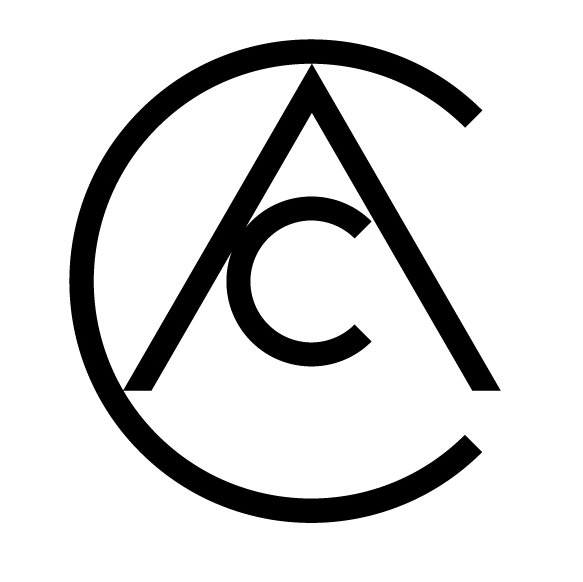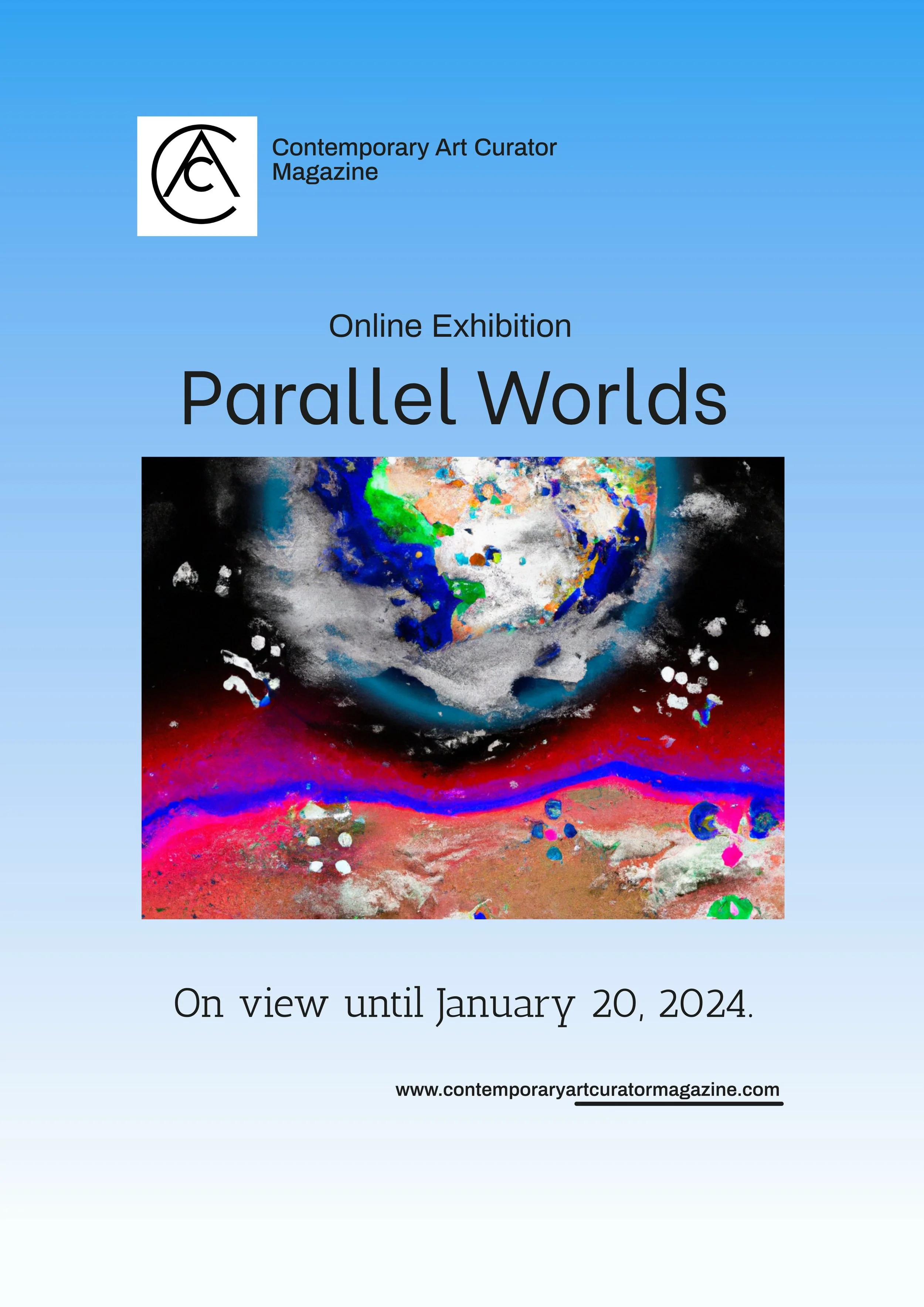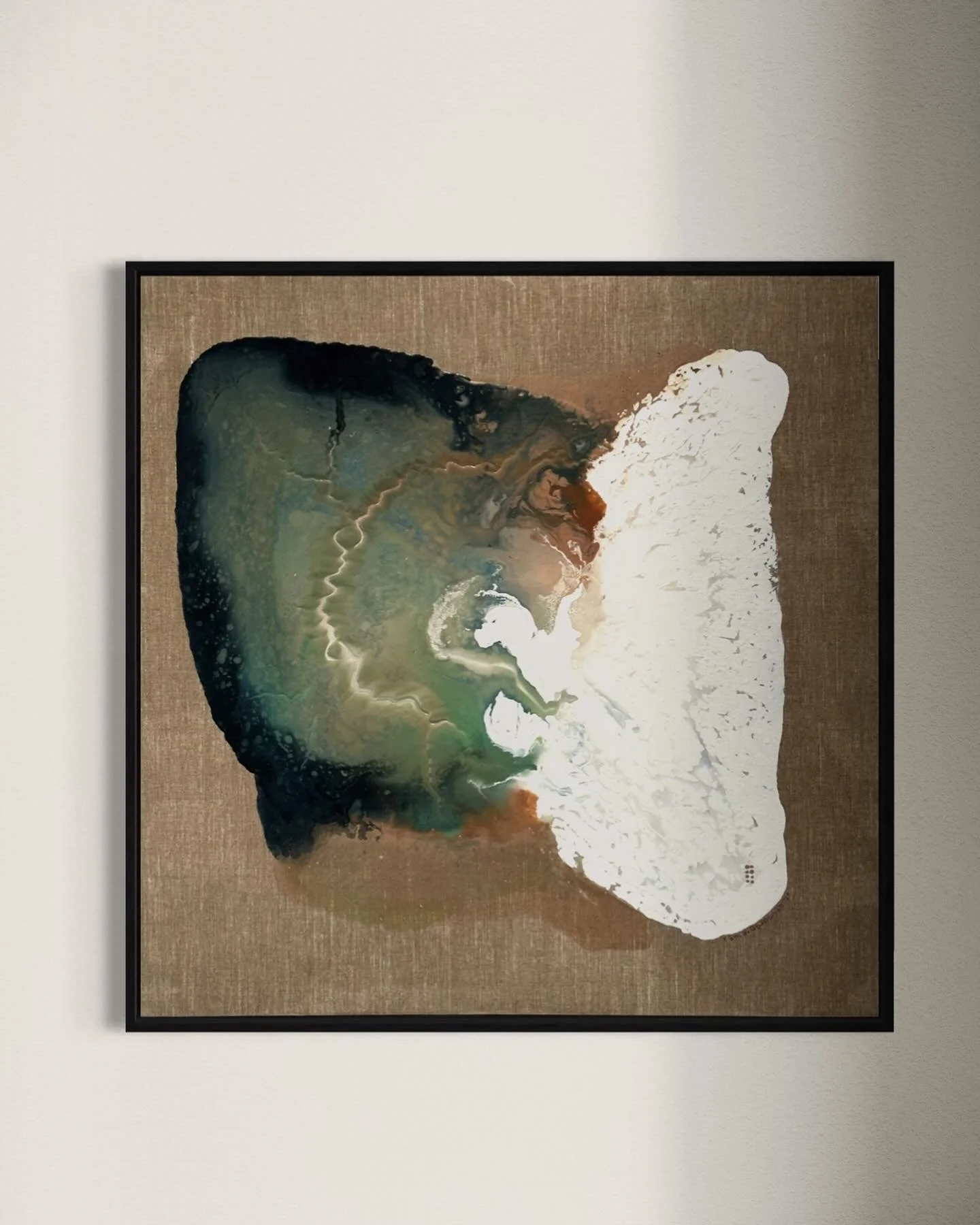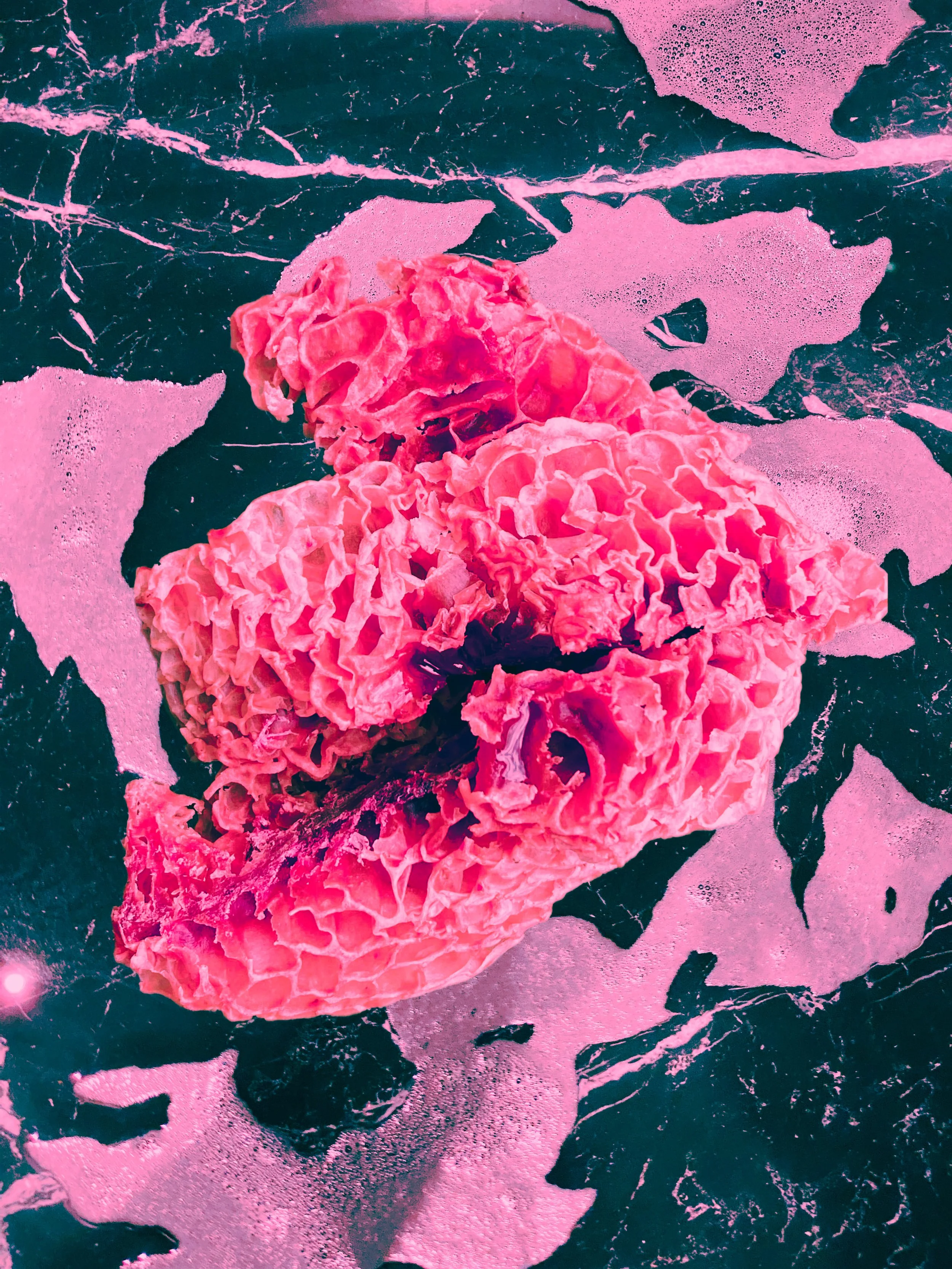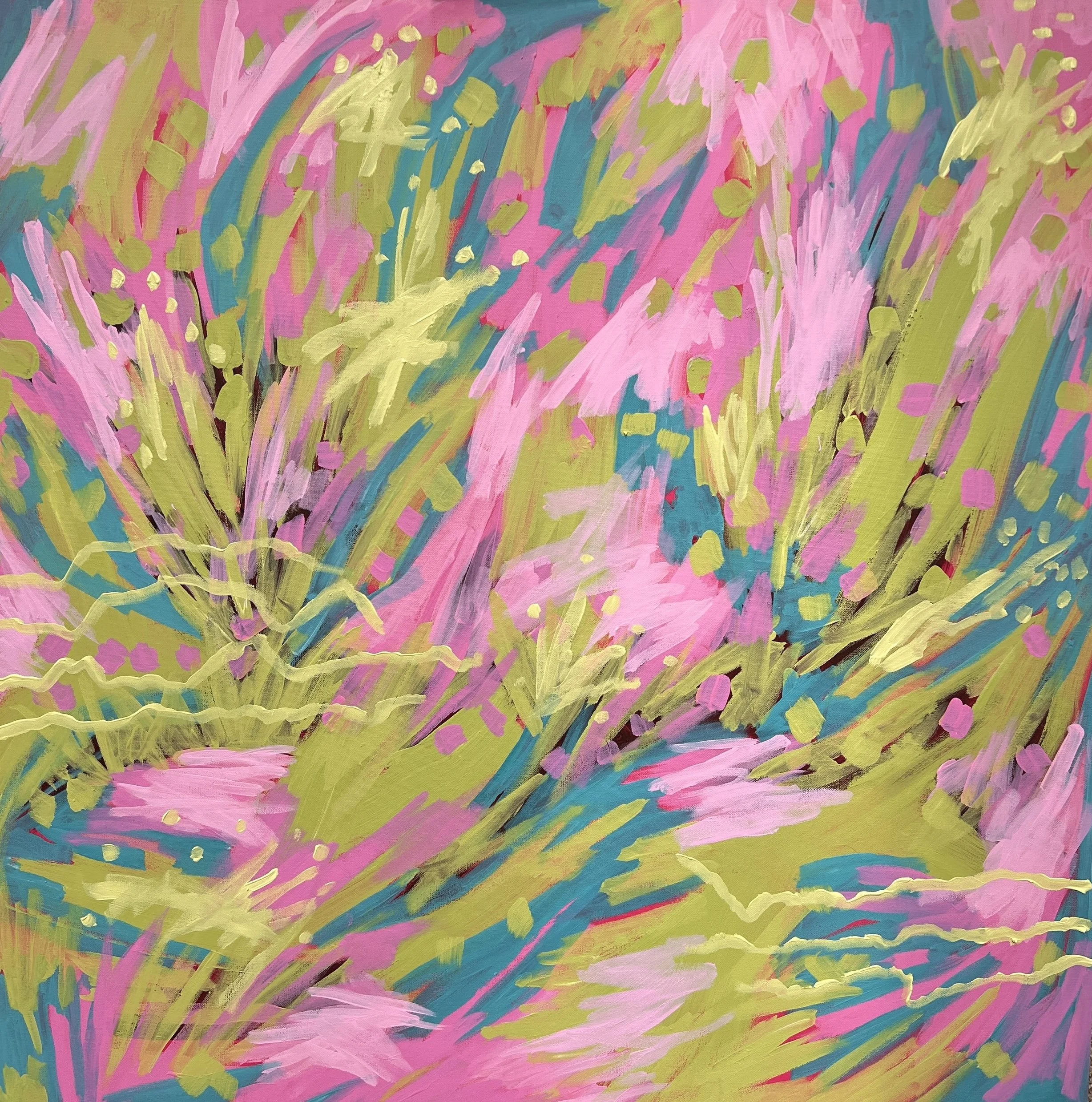Lucas van Eeghen lives and works in the outskirts of Amsterdam, the Netherlands. His artistic activity mainly focuses in the field of painting, a discipline he approaches with originality, recovering the typical technique of traditional craftsmanship and by experimenting with personal and never conventional forms of three-dimensional expression.
All in Contemporary Art
Online Exhibition Parallel Worlds
We are thrilled to announce our new Online Exhibition, "Parallel Worlds." On view till January 20, 2024.
Interview with Olga Goldina Hirsch
Her artworks document the dynamics of inward journey towards recovering the obliterated memory, from the initial gaping voids and blank spaces present in the compositions, towards the airy, light, vibrant and open inspirational cosmic spaces, replete in meanings. From them, you can trace the trajectory of her inner artistic, spiritual and personal journey, which still continues. Her artworks are like palimpsests, and each viewer can focus on different layer.
Interview with Bex Wilkinson
Your approach to painting is characterized by bold brushstrokes and a free-form application of paint. How do these techniques help you express the 'mess' of the human experience?
As John Lennon says, "LIfe is the thing that happens when you are making other plans." Yep. We may think we are moving in one direction and then POP! something happens and we find ourselves in a completely different direction. Now, I'm sure that some people lay out their life plans and follow it to a tee. But for the rest of us, it's a mess. It's a beautiful, turgid ride- this Being Human.
Interview with Chris Silver
Your artistic journey seems deeply intertwined with your personal experiences, particularly regarding mental health. How do you navigate the delicate balance between expressing your inner world through your art while also connecting with a diverse audience?
My artistic journey is intricately woven with personal experiences, especially those related to mental health. Navigating the balance between expressing my inner world and connecting emotionally with a diverse audience is crucial. I believe good art should have soul and evoke emotions, making use of varied themes like nostalgia, pop, and expressionism to ensure broader accessibility. By playing with colour, I aim to depict inner anxieties and spark emotions in viewers.
Interview with Chaitali.V Purushothaman
CHAITALI. V. PURUSHOTHAMAN is a Multi-Award-winning Successful Entrepreneur having multiple Careers as a WORLD RENOWNED Professional 25-Time International Award-Winning High Vibrational Energy shifting Positive Vastu Painter- Energizer, Feng shui Painter, Spiritual Painter, Vastu Consultant and Vastu Corrector for changing, balancing and shifting the Energy of space from low-Negative to high –Positive frequency, Vedic Astrologer, Illustrator, Fashion illustrator, Spiritual Aura Astro Astral Healer -Coach- Mentor, Psychic , Chakra Therapist Balancer, Therapist for children and Adults, Counsellor, Couple Counsellor and also a Stock Investor and has made an extraordinary mark in all her Fields.
Interview with Elena Grishaeva Dj Le Nochka
What kind of artist do you ultimately see yourself as?
I see myself as myself, and I like this most of all in my work. I love creativity for the lack of restrictions and therefore I mix different types of art since I am a multipotential.In my case, it is impossible to talk about the final result.The more I create , the more new ideas I have Therefore, sometimes I can simply suspend my activities if I feel the need to do so.
Interview with Katrin Loy
Your work navigates between consciousness and the subconscious. How do you prepare yourself mentally and emotionally to capture these fleeting states in your photography?
I am strongly guided by my intuition both during photography and image processing. I don't think about the result I'm aiming for, but work in a processual and associative way, picking up on spontaneously emerging ideas and impulses. The creative process in my work mainly takes place during image processing. There, too, I intuitively access my collected image material and edit and change it by following spontaneous impulses. The result, i.e. the finished picture, is never planned, but always surprising for me, which makes and keeps the artistic work exciting for me.
Interview with Rania Abulhasan
Rania Abulhasan is a Kuwaiti mix media painter and illustrator. Her artwork is strongly influenced by her experience in fashion and product design: she emphasizes life and movement, using shapes and colours to express her ideas and communicate her message. Her soft delicate work bring a sense of calm and serenity to the viewer.
Interview with Janna Shulrufer
How has your artistic style evolved since you began your career, and what have been some pivotal moments in this evolution?
It seems to me that I myself have changed even more than my style. I have drawings from more than twenty years ago, when I lived in Tel Aviv and went to A-Yarkon Park to paint landscapes en plein air and I went to the embankment to paint the sea and sailboats. At the same time, I visited the studio of a sculptor - a new immigrant from France - where we painted nudes. My pencil drawings of those years were more academic - the Moscow school took its toll. A key moment in my career as an artist was moving to Safed. For me it was like a breath of fresh air. Come and see for yourself, the air in Galilee is really very fresh.
Interview with Nasrah Nefer
Your artwork is known for its abstract style, pittura metafisica, and maximalism. Can you describe what draws you to these particular styles and how you blend them to create your unique artistic Expression?
All three of these styles have something very important in common; unlike realism or photorealism, they have no limitations. I can leave the conventional ground and paint without limits what has already formed an image inside me. Pittura Metafisica best describes the result of a soul ianguage; it’s like dreaming on canvas.
Interview with Ivan Kanchev
Could you walk us through your creative process? How do you approach the inception of a new piece, and what are the key stages in your workflow?
I don't like to explain my work. I define myself as an intuitive artist. I accept that instinct surpasses knowledge. For me, conceptual understanding always follows the image. I see the works ready in my mind like in a picture - with details and with colors. All I do is materialize the image that has appeared. I do not improvise. Only when I see an image do I start working. In the process of creation, other ideas naturally follow. On certain occasions I leave the work in reality different from what I saw in my mind. And isn't that improvisation?
Interview with Terence McGinity.
How did your experience as an actor, particularly your time at Shakespeare's Globe and Broadway, influence your approach to sculpting?
As an actor I was always interested in the inner world of the characters I played. My Swan Song was playing Malvolio in Twelfth Night, again on Broadway in 2014. I worked very hard to ‘get into his shoes’ and felt, most of all, his vulnerability whilst he presented such a stern image to the world. So many characters I played were dealing with Loss, Separation and Attachment. All this influenced my work as a sculptor. All the World’s a Stage and the figures that have emerged over the years have all come with their stories. They do not need a Theatrical Stage as such but certainly exist in the invisible contexts of their lives. They ask to be seen like an actor.
Interview with Gustavs Filipsons
I was born in 1974, Riga. When I was a child, I was deeply inspired by the cities old architecture and its different moods in different seasons. At that time everything seemed to live its own life and had its special spirit. Dark Art Nouveau style houses in Autumn evenings became alive in feeble lamplight, which was swinging in the wind above the street. Those mythical silhouettes and symbols at that time had much greater influence on me than the bypassing Soviet Era.
Interview with Stanislav Riha - Standa
Growing up in Lesser Town, Prague, surrounded by medieval and modern art, can you share how this environment influenced your early desire to create and your artistic style?
I do not know If the art of the Lesser Town shaped my artistic style but drew out my creative abilities and desire to create art. Growing up in an atmosphere of admiration for artistic values made me want to create as well, using the most accessible tools I had as a child, pencil and paper, which was the base of my style, always starting with pencil and paper.
Interview with Natalie Egger
Being featured in various art books and magazines is a significant accomplishment. How do you feel this recognition has impacted your career and artistic journey? Has it influenced the way you approach your art?
Being featured in books and magazines is a great opportunity and chance to get my art brought to a wider audience, however it has not influenced my process of creation. But I admit that it is interesting to observe how curators, art lovers, friends and family prefer artworks of mine which I would never choose to be my favorites. So, art is always a very private, very personal, very intimate relationship with the viewer this I have learned so far through publishing my artworks.
Interview with Caroline Reid
What are your short-term and long-term goals as a contemporary artist? Are there specific milestones you aspire to achieve in your career?
I am currently planning to continue painting abstract landscapes, with a series based on the sea and the sky in mind, after extensively painting regional inland landscapes. This will result in a collection suitable for a solo exhibition.
Interview with Dr. Robert Irwin Wolf
Where do you see the intersection of psychoanalysis and art therapy heading in the future? Are there emerging trends or areas of research that you find particularly exciting or important?
As part of the Steering Committee of the NeuroPsych study group at the National Psychological Association for Psychoanalysis, I have been actively involved in disseminating these concepts within the broader psychoanalytic community. Both the psychoanalytic community and field of art therapy, have benefitted by having new insight into the use of expressive art and nonverbal communication in therapeutic settings. We have been given renewed validation from the scientific community and now have terminology to describe what we have been intuitively using, without a clear voice.
Interview with Ingemar Härdelin
What have been some of the biggest challenges you have faced in your artistic career and how did you overcome them?
The biggest challenge has been to dare to follow one's intentions to the end during the painting process. Instead of settling for a half-decent result, one can perhaps develop the painting if one dares to go further, with the risk of destroying the painting. It requires courage and faith in one's ability, something I have learned to handle over the years.
Interview with Felipe Alarcón Echenique
In what ways do your practices as a painter and a writer complement and influence each other, and how do you balance these two distinct yet potentially interconnected forms of expression?
My work as a painter and artist feeds each other since one is the continuity of the other, in painting the literal language is very present in a poetic and fabled way, represented with dreamlike colors and in my creation as a writer I also give free rein to freedom when writing free prose or a specific topic, generally painting and writing in my case go together.
